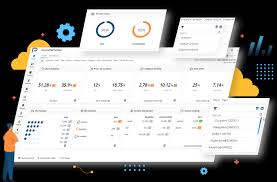What Is Digital Shelf Analytics and Why Every Amazon Seller Needs It In 2025

With quicker-than-ever times of web buying, online shelf achievement is just as important as achieving the so-wanted brick-and-mortar shelf space in a physical store. For 2025 Amazon vendors, digital shelf analytics is not a luxury—it’s a necessity. One has to know how products are viewed, browsed, and converted in cyberspace because the impact directly influences brand awareness, customer engagement, and ultimately sales.
Product listing alone is no longer enough. With more competition and altered consumer trends, sellers now have to monitor every detail of their online presence to stay in the game.
What Is Digital Shelf Analytics?
Digital shelf analytics is the process of gathering, quantifying, and analysing data throughout online shelves to identify how a product is doing throughout main metrics. These consist of search positions, price, availability in stock, customer reviews, and adherence to content.
It assists sellers in answering critical questions: Is my product in stock? Is my price competitive? Are my product images and representations cutting-edge enough for pursuit? From this information, companies can spot gaps and make educated decisions to fortify web strategies.
As opposed to the simple reporting, digital shelf analytics provides actionable, real-time insights relevant to how products compete through digital channels. Hence, it is priceless for sellers to optimise operations and deliver maximum ROI.
Why Amazon Sellers Need to Care in 2025
The Amazon shelf has become extremely congested. Even niche categories now feature tens, if not hundreds, of competing products. Relying on gut or outdated reports opens brands up to sudden shifts, such as competition underpricing the product or Amazon algorithmic shifts.
In 2025, digital shelf measurement is critical to helping brands achieve:
- Maintaining consistent brand representation on listings.
- Monitoring competitor movement in real-time.
- Optimise advertising and promotional strategies.
- Sustain price compliance between different marketplaces.
- Early identification of stockouts and content errors.
With a powerful product analytics tool, sellers are less likely to lag, even with a great product.
The Power of Product Analytics Tools
Product analytics tools are the foundation of a solid digital shelf strategy. They help in the automation of data collection, gaining insights at the category level, and monitoring performance compared to the larger players.
Instead of having to manually inspect listings, these tools come equipped with dashboards and notifications, which are more efficient and targeted.
Using the proper tool, sellers can see underlying trends, like why one specific SKU is performing poorly or how price fluctuations affect conversions. They can even test variations in content and measure the results scientifically.
A good digital shelf analytics solution, combined with product analytics capabilities, ensures that brands are not depending on hypotheses to make decisions but on reliable, actionable facts.
Feature on Paxcom and Kinator
One of the reliable players providing digital shelf analytics solutions is Paxcom. Its platform, Kinator, is unique because it offers comprehensive, real-time insights into the digital shelf ecosystem.
With Kinator, Amazon sellers have access to the product availability, content accuracy, share of search, competitor action, and customer sentiment in a single location.
Paxcom’s approach is particularly well-suited for brands seeking to expand into multiple marketplaces and regions. In offering full analytics capabilities, Paxcom enables companies to act ahead of time with their online presence, rather than reacting once something has gone awry.
For sellers looking to expand successfully in 2025, adding a tool like Kinator to the mix can be the solution.
Conclusion
Digital shelf analytics is no longer a luxury add-on; it is a necessary requirement for Amazon sellers operating in the highly competitive 2025 landscape.
Those brands that leverage sophisticated product analytics tools are better equipped to respond to market trends, defend their online territory, and cultivate higher conversion rates.
With growing consumer needs, being visible, trusted, and fact-based on the online shelf will determine who the winners and losers are. Today’s sellers who invest in analytics will not just survive but dominate.






